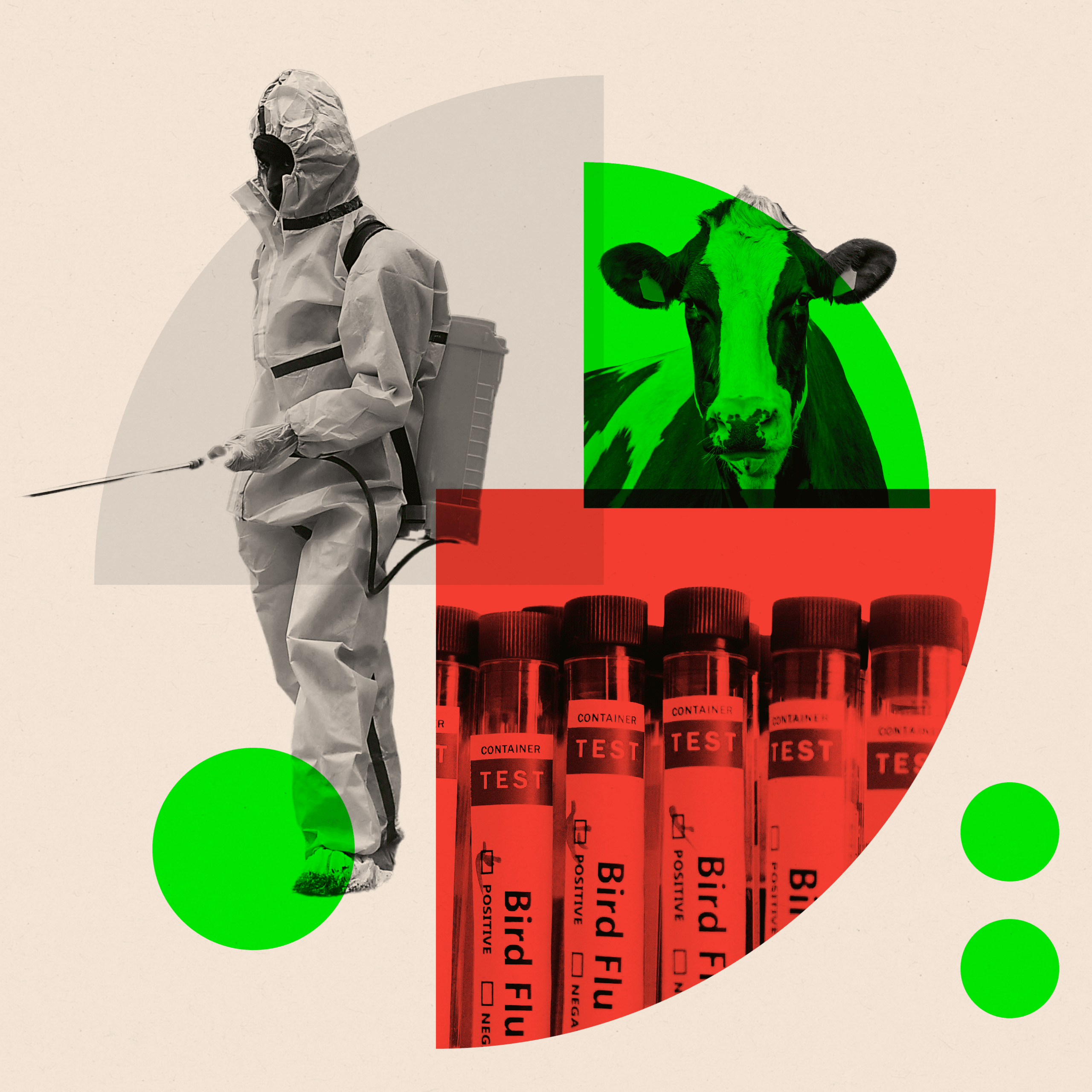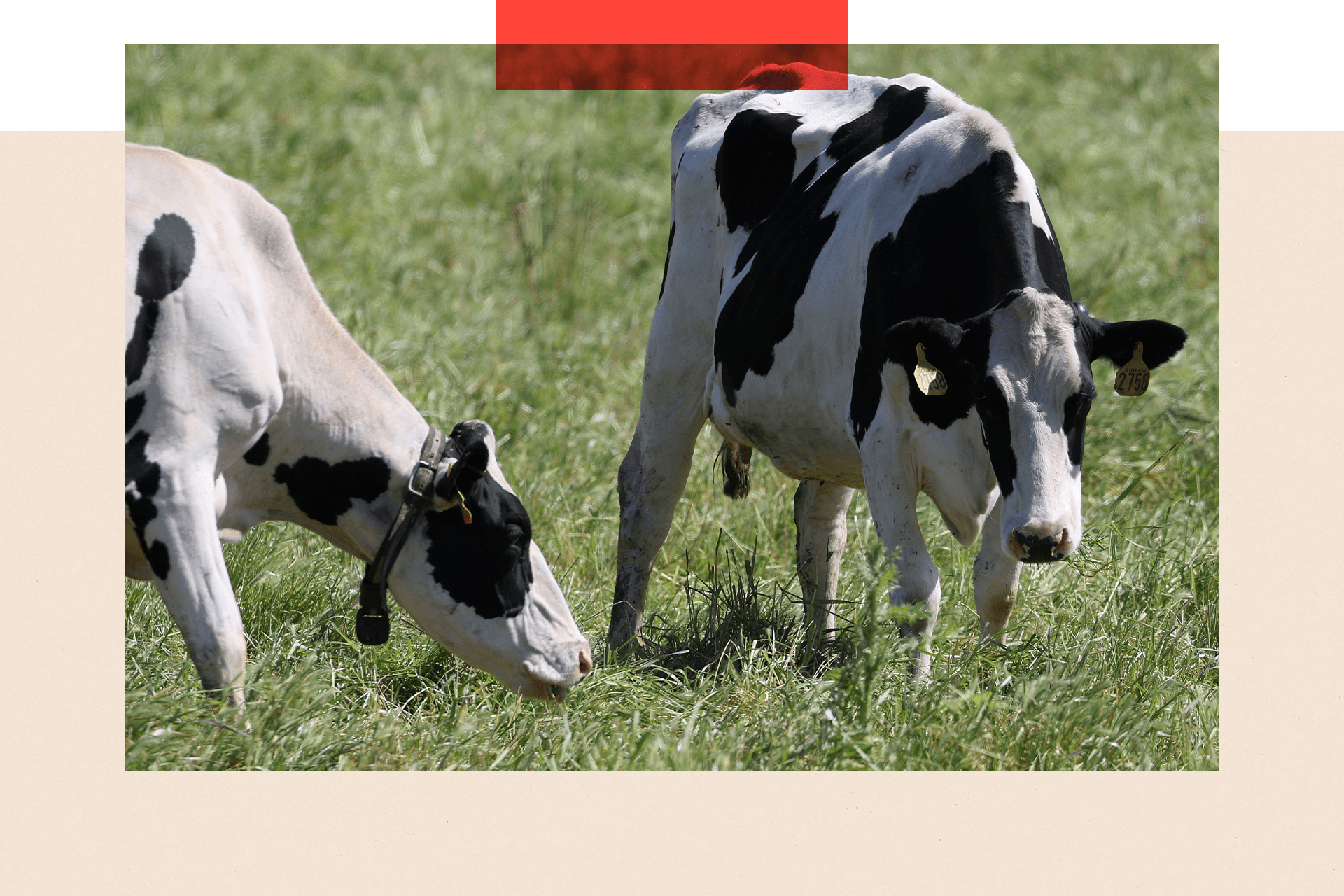
The long-feared leap
The H5N1 strain of avian flu has been around since 1996, but until now it has been largely confined to animals. But it has now jumped to cattle in America and some think it means we are inching towards eventual human-to-human infection, with potentially serious consequences.
Infected cows have started infecting each other
H5N1 first appeared in geese in wet markets in Guangdong, China. Since then there have been various outbreaks around the world where chickens and wild birds have become infected. But as Covid was ravaging the human world, H5N1 began to spread quickly, killing millions of birds – both reared and wild – and affecting seal and sea lion populations around the globe. The virus has also appeared in a mink farm in Spain and polar bears in the Arctic.
The question we were asking was where would it go next? A few weeks back we got our answer. In March, farmers in Texas and Kansas started reporting that their cows had low appetites and were producing less milk. Tests came back positive for H5N1. And this was not just individual cases brought on by chance contamination: the cows were infecting each other.
BSE taught Europe and the UK to track its cows. America doesn’t.
Since March, H5N1 has been confirmed in dairy cattle in nine US states. Scientists are still trying to establish how the virus is being spread.
“Right now it seems like the milking equipment may be one of the ways,” says Dr Caitlin Rivers, an epidemiologist at the Johns Hopkins School of Public Health
“Scientists are finding very high levels of virus in milk. And so that's why the milking equipment seems like it might be playing a role.”
She adds that the spread of the virus between states seems to be down to the movement of infected cows across state lines.

Avian flu is evolving but what risk does it pose to us? David Aaronovich investigates for The Briefing Room.

Reporting and surveillance of cattle movement in the US is poor compared with the UK and Europe where the BSE outbreaks of the mid-nineties led to all cows having to be tagged.
Science journalist Kai Kupferschmidt says that in an ideal world, we’d know how many cows were asymptomatic carriers and speed up our capacity to test for antibodies in the blood.
“We really should know a little bit more and have a bit more data,” he adds.
What the case of a Texas farm worker does and doesn’t mean
In March, a dairy farm worker in Texas began displaying symptoms after direct and close contact with sick cows. After treatment he made a full recovery. Tests on the virus showed it had mutated to be better adapted to mammalian cells.
Dr Rivers says that specific mutation has not been detected elsewhere, so it could be that the virus only mutated in that case.
“As long as that human didn't pass the virus on to other humans, then it's sort of a dead end situation,” she says.

So we aren’t there yet, and perhaps not even close. But Kai Kupferschmidt says that while he doubts we’ll be in a H5N1 pandemic next week or next month, the virus is inching closer to humans.
“The reason we are not in a pandemic has nothing to do with us humans reacting appropriately in this situation,” he says.
“I think it's only because the virus, so far, seems pretty bad at infecting humans. So in some ways we are at the mercy of this virus‘ capabilities to change.”
And here’s the problem - we’re giving H5N1 a pretty good environment within which to mutate and if that goes on long enough, it’s very possible that the virus will hit on a combination that makes it well suited for humans.
What happens if humans start infecting each other
Transmission from animals to humans is very rare. The World Health Organization (WHO) reports that from 2003 to 2024 there were 889 known human cases of H5N1 in 23 countries.
A little over half of those cases have resulted in death but many more cases will have gone undetected and the fatality rate are likely to be far lower.
There have been no reported cases of H5N1 in cows in the UK. Professor Ian Brown, who leads the avian virology group at The Pirbright Institute says the UK – like Europe - has very strong animal health systems that are designed to track and monitor changes in disease traits.
He says: “If something like milk drop, which has been reported in these cattle, was substantive, changes in that that wouldn't have gone under the radar of recognition, and would probably have been followed up.”
Given that, and in the wake of Covid, you may be wondering about vaccine preparedness. The WHO meets twice a year to discuss emerging strains of influenza virus and I was extremely relieved when Prof Brown told me that initial data indicates that there already candidate vaccines to match the strains in cattle in the US.
It's a paradox, but just as we have helped create the circumstances in which viruses like to mutate and spread, we’ve simultaneously become far better in tracking them and developing defences against them.
Let’s hope those defences won’t be needed.
More from InDepth
What the ICC arrest warrants mean for Israel and Hamas
- Published21 May 2024
What next for Iran after President Raisi's death?
- Published20 May 2024
Why the BBC could track down a people-smuggling kingpin before the police
- Published18 May 2024
BBC InDepth is the new home on the website and app for the best analysis and expertise from our top journalists. Under a distinctive new brand, we’ll bring you fresh perspectives that challenge assumptions, and deep reporting on the biggest issues to help you make sense of a complex world. And we’ll be showcasing thought-provoking content from across BBC Sounds and iPlayer too. We’re starting small but thinking big, and we want to know what you think - you can send us your feedback by clicking on the button below.
Get in touch
InDepth is the home for the best analysis from across BBC News. Tell us what you think.

